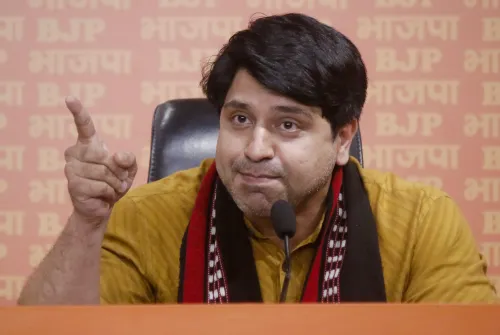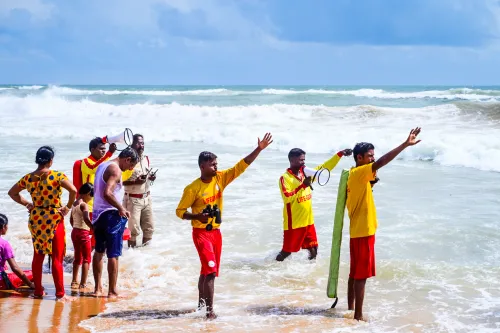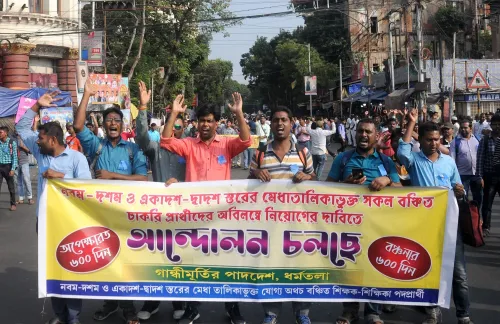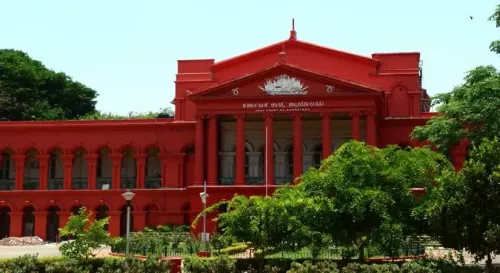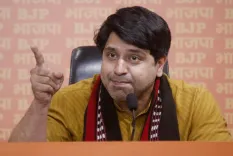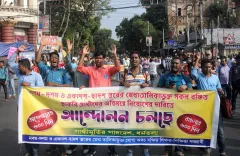Is Maharashtra Ready to Achieve the Ambitious Goals of Viksit Bharat 2047?
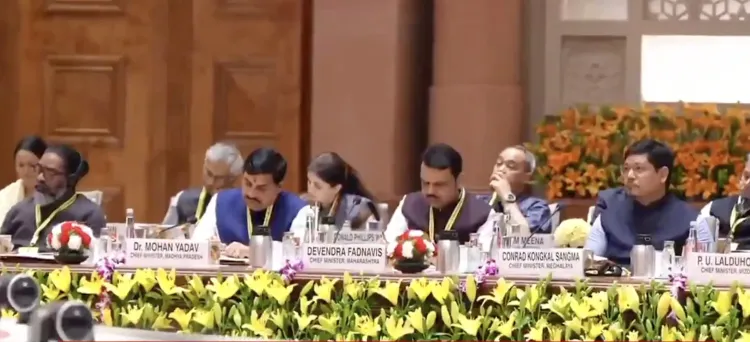
Synopsis
Key Takeaways
- Maharashtra targets a $1 trillion economy by 2030.
- Development of MMR as a growth hub is underway.
- Focus on green energy with 52% target by 2030.
- Strong emphasis on MSME growth and entrepreneurship.
- Investments in infrastructure are accelerating state growth.
Mumbai, May 24 (NationPress) The Chief Minister of Maharashtra, Devendra Fadnavis, emphasized on Saturday that the state's primary goal is to transition into a $1 trillion economy by 2030 and a $5 trillion economy by 2047.
“With guidance from NITI Aayog, our government is shaping the Mumbai Metropolitan Region (MMR) into a crucial growth hub, aspiring to reach a 1.5 trillion dollar economy by 2047. We anticipate special financial support from the Central Government for this endeavor,” he noted.
During his address at the NITI Aayog’s Governing Council meeting led by Prime Minister Narendra Modi, Fadnavis stated that Maharashtra will be fully prepared to realize the 'Vision of Development and Heritage' alongside the Central Government and other states, aiming for a fully developed India by 2047.
“Following national guidelines, the Maharashtra government is crafting a Vision for 2047 in three distinct phases. Our administration has initiated a program based on 100 days of effective governance, focusing on citizen-oriented initiatives and accountability. Various departments have surpassed over 700 goals already. A new 150-day initiative is underway, and we are preparing for Maharashtra’s Amrit Mahotsav in 2035, along with a short-term vision for 2029 with annual targets,” he added.
CM Fadnavis mentioned that the aim of the new industrial policy is to elevate the manufacturing sector's contribution to GSDP above 20 percent. The single window clearance system, titled Maitri 2.0, has been put into action, fostering new sectors such as EV, semiconductors, green hydrogen, and data centers.
Highlighting Maharashtra as an investment hub, he revealed that the state signed MoUs worth Rs 15.96 lakh crore at the Davos World Economic Forum. Impressively, 50 percent of these proposals are being processed, and significant investments are being funneled into tier-II and tier-III cities. Gadchiroli is evolving into a steel city, Nagpur is becoming a defense center, Amravati is developing a textile hub, and Chhatrapati Sambhajinagar is focused on EV production. A smart industrial city is also being established in Dighi, Raigad district. The state government is further promoting the service sector through policies on IT, export promotion, logistics, AVGC (Audio-Visual-Gaming-Comics), and GCC (Global Competence Centre).
According to the Chief Minister, Maharashtra boasts more than 60 lakh MSMEs registered on the Udyam portal, the highest in the nation. This has created opportunities for 2 lakh entrepreneurs via the Ease of Doing Business and the Chief Minister's Employment Generation Programme. At the Waves Conference in Mumbai, MoUs worth Rs 5,000 crore were signed for two global studios, alongside the establishment of IICT in Mumbai, the launch of Waves Index at NSE, and collaborations with the University of York and the University of Western Australia.
“We are creating an Innovation City to foster startups and creative talents. We are simplifying the skill development process to enhance entrepreneurship and employment opportunities. This initiative will cultivate an ecosystem focused on AI, green energy, biotech, fintech, agritech, and smart manufacturing. A PPP model has been approved to ensure top-tier skills in ITIs, particularly in rural areas,” he remarked.
Projects like Samruddhi Mahamarg, Atal Setu, and Coaster Road are propelling Maharashtra's development and infrastructure revolution. Vadhan Port, the Navi Mumbai International Airport, Metro, Railways, and Multimodal Logistics Park are set to stimulate regional growth, he asserted.
CM Fadnavis assured that by 2030, 52 percent of the state’s energy will come from green sources. He revealed that 45,500 MW of additional power purchase agreements have been signed, with a significant portion, 36,000 MW, being green energy. By 2030, 52 percent of the state's energy will be green.
“Through the Mukhyamantri Saurkrishi Vahini Yojana 2.0, projects with a capacity of 16,000 MW have been initiated on 10,000 agricultural feeders, with 1400 MW already implemented. By December 2026, all farmers in the state will have access to daytime electricity from solar projects. The Solar Gram scheme is being executed in 100 villages, with 15 villages achieving full solar energy status. A new policy for pump storage has been developed, leading to 15 agreements for 45 pumped storage projects (PSPs) with a total capacity of 62,125 MW and an investment of Rs 3.42 lakh crore, creating 96,190 jobs,” he explained.
CM Fadnavis stated that a Circular economy is being advanced to safeguard the environment, with specialized recycling parks established for e-waste, plastics, textiles, metals, and vehicles. The Nashik Kumbh Mela is scheduled for 2027, and Maharashtra is hopeful for guidance and financial support from the Centre for this event.
Additionally, the Chief Minister expressed his utmost appreciation and congratulations to the Indian Army and India's steadfast leader, Prime Minister Narendra Modi, for their efforts in 'Operation Sindoor'.

